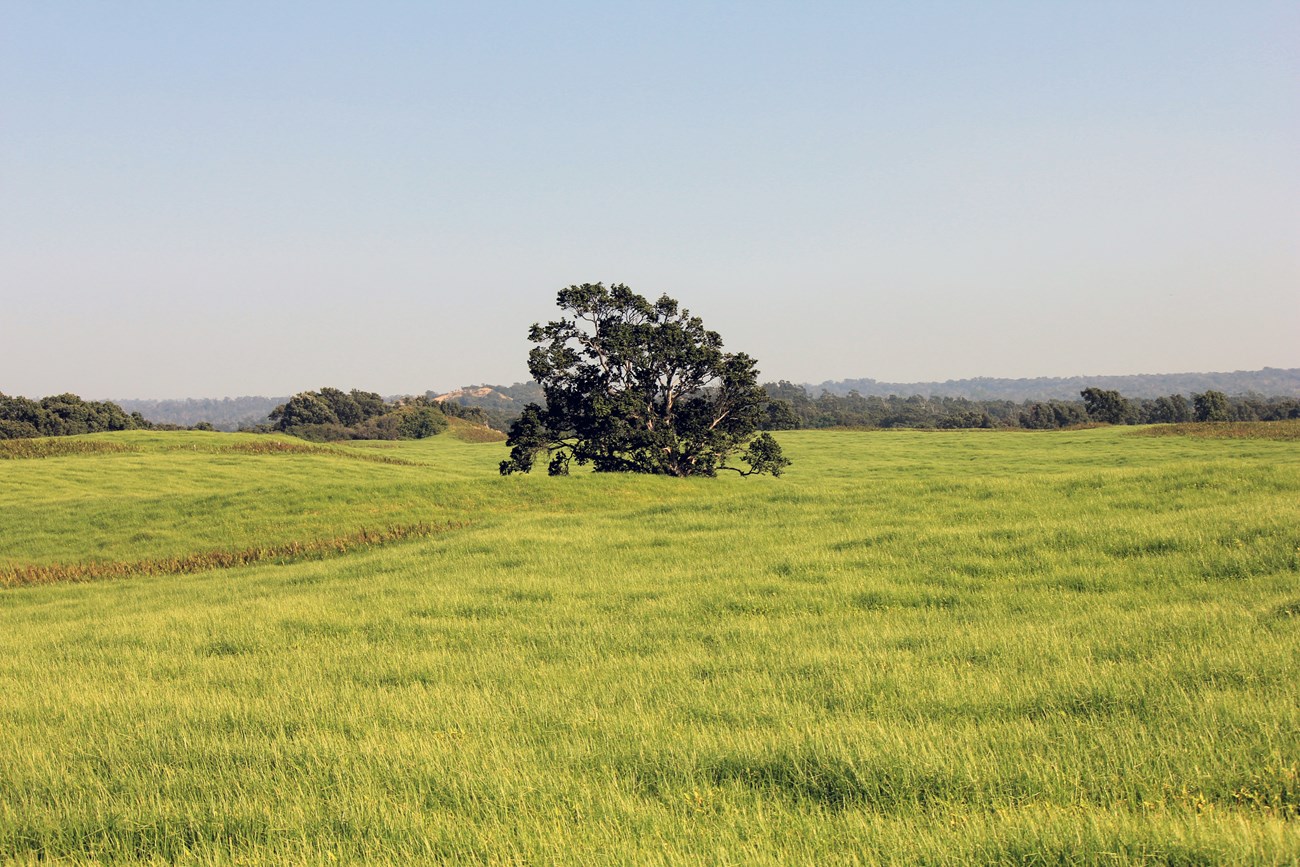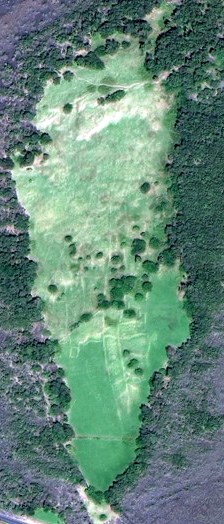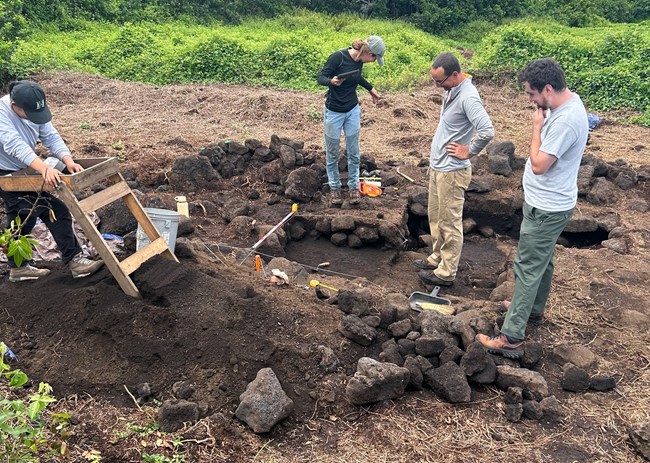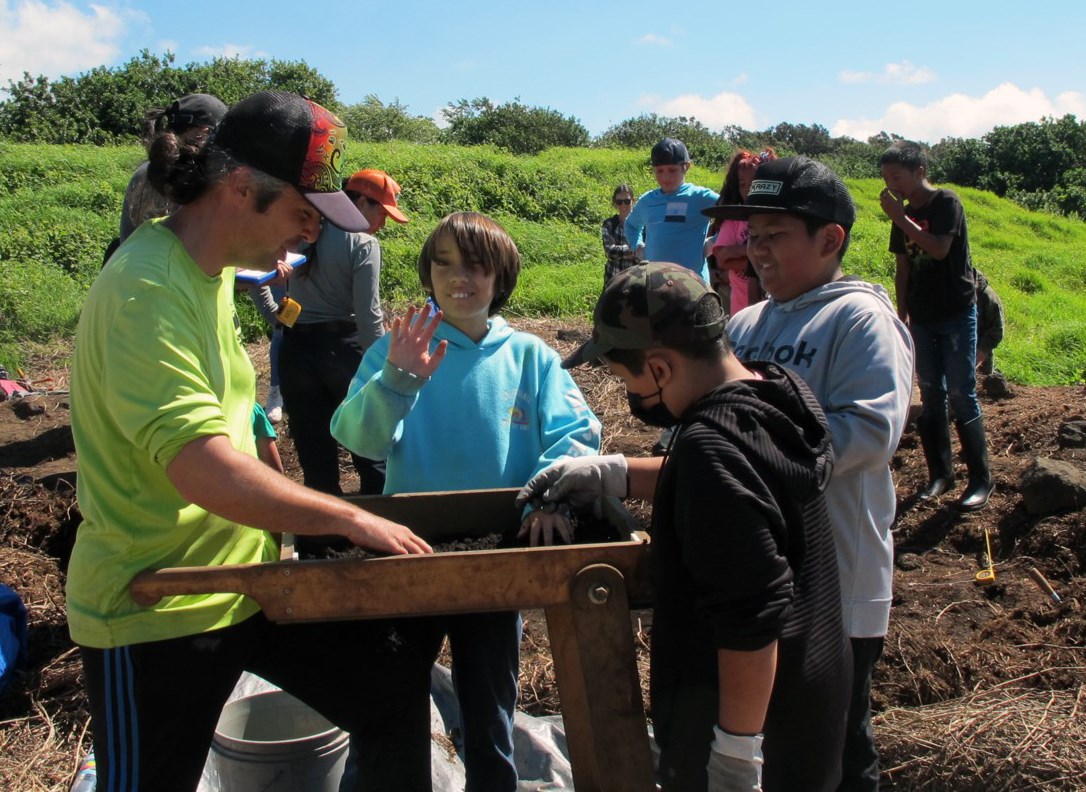Last updated: December 5, 2024
Article
A Fertile Landscape: Unearthing Agricultural Archeology at Hawaiʻi Volcanoes National Park

NPS Photo
On the island of Hawaiʻi, on the leeward slope of Mauna Loa, there are large remnants of pasture lands overlooking the ocean. Wind rushes over the thick, green, grass, causing it to ripple like the waves in the distance. What lies under the surface though, is what interests archeologists. The fields contain vestiges of an extensive agricultural farmland, known as the Kaʻū Field System, which was cultivated by the hands of ancient Hawaiian mahiʻai, or farmers. They built stone walls in the fields to take advantage of the terrain and weather, maximizing their crop yield. Archeologists at the University of Hawai’i Mānoa and National Park Service staff at Hawai’i Volcanoes National Park want to know more about these stone walls – in the hopes that they might shed light on ancient farming techniques and inspire farmers to cultivate a more sustainable future for the Hawaiian Islands.

NPS Photo
Agricultural Technology
This landscape could be challenging to cultivate. Hawaiian farmers had to learn how to overcome the weather, erosion, and volcanic soils. One way they did this was by building stone walls, called kuaiwi. These walls were the backbone of the farming system.1 They appear in multiple field systems across the island of Hawai’i and are uniquely suited to the needs of Hawaiian farmers. The fields were not irrigated with water brought in from elsewhere. They were fed by rainfall and are called dryland agricultural systems. These stone walls helped prevent excess water evaporation and erosion.Water is essential for plants to grow and produce. The walls helped to block the wind, which causes water in plants to evaporate faster. Farmers grew tall plants like kō, or sugar cane, atop the stone walls. These tall plants caught rain and fog, funneling it down to the soil and the other crops, like sweet potato.
The walls also slowed erosion. If you’ve ever seen a garden on a hillside, you can imagine what's at work here. When rain pelts a hill, it pulls down the soil with it, leaching it of the nutrients that make it fertile. These walls act like a shelf that holds the soil. This agricultural technology served Hawaiian farmers for centuries, feeding entire populations.

NPS Photo
Fields of Change
Around the 1400s the sweet potato was introduced to the Hawaiian Islands. This hearty crop could survive in difficult terrain and farmers cultivated it in fields like Kaʻū. The sweet potato became the basis of the dryland farming system. These nutrient-dense harvests in turn supported larger populations, leading to growth and expansion on the island of Hawai’i.In the 1800s, Hawaiians experienced a huge shift from their traditional lifestyle. Hawaiian royalty and foreign merchants drew the islands into a market economy, breaking up the traditional land tenure and labor systems. One of the first commodities Hawaiian royalty exported was sandalwood, which was used to create incense in Asia and fetched high prices in furniture markets. The sandalwood extraction was unsustainable and soon the trees were depleted, leaving a void in the market.
For the first time, Hawaiians were pulled into this market economy, needing to make money to pay taxes to royalty. Many farmers moved to centralized port towns to find jobs. In addition, European and American colonizers brought diseases that decimated the Hawaiian population, forcing farmers to abandon the labor-intensive fields.2 Once the sandalwood trade collapsed, Hawaiians looked for another valuable export, turning to cattle ranching. You can see this pattern in Kaʻū where the Kahuku Ranch was once one of the biggest cattle ranches in Hawaiʻi, producing beef and hides for more than 150 years.

NPS Photo
Rediscovering Kaʻū
This unit of Hawai’i Volcanoes National Park, the Kahuku Unit, was acquired in 2003. Over the last twenty years, the NPS has done a slew of archeological surveys, inventories, and excavations to understand what lies under the soil. NPS employees had a hunch that the striations they were seeing in the Kahuku fields were similar to other, well-known fields in Kohala and Kona.3 In the late 2000s, they looked at aerial photographs and used predictive models4 to rediscover what was there.Seth Quintus, archeologist and Associate Professor of Anthropology at UH Mānoa, has been interested in this topic since his days as an intern in the park in 2010, when he first got to explore the fields. In 2017, he conducted research in Kaʻū to learn when and why the stone walls were built where they were.

NPS Photo
In addition, Seth and his team deconstructed some of the stone walls to get underneath them and collect charcoal from the soil. They then did radiocarbon dating to develop a range of dates for the walls themselves. They were able to confirm that the earliest walls were built in the 1400-1500s, the same time as the other fields across Hawai’i. That's exciting because it shows a transfer of knowledge and a spread of culture. Mahiʻai learned to adapt to their landscape, to thrive and feed a growing community here.5

NPS Photo
Building the Future Food System
In 2023, the national park offered field trips for local K-12 schools to get hands-on experience with Seth and his team of college students. While participating in the field school, UH Mānoa college students taught the younger students about the site’s history and the archeology techniques they used. Students got to participate in excavations, turning the same soil that their ancestors likely farmed. At the same time these young students were exposed to potential career paths, they also learned about the rich agricultural heritage of their home.These young people are inheriting a food system in need of help. Is it possible to look to the past for answers? Hawai’i imports over 85% of its food rather than growing produce itself.6 Many people in the state see this as a time ripe for change and are calling for more small farms that can provide fresh food to their local communities. These smaller farms, they argue, will increase Hawaiian control over the land and food system, decrease reliance on imports, and provide safeguards against food shortages. While there is no turning back the clock – some researchers have started experimental plots where they are testing out the ancient farming techniques.7 Perhaps the ingenuity and adaptability of ancient Hawaiian farmers can teach us how to buffer ourselves against an uncertain future.
This project was conducted in partnership with the University of Hawaiʻi at Mānoa through the Hawaiʻi-Pacific Islands Cooperative Ecosystem Studies Unit (CESU), HIPI#P21AC12120.
CESUs bring together federal and non-federal partners to protect our nation’s natural and cultural heritage. From managing museum collections, to restoring ecosystems, the network makes it easy for experts at universities, museums, and research institutes to contribute their knowledge to the preservation of these resources.
Resources
1 Personal interview with Seth Quintus, February 7, 2024.2 Ladefoged, Thegn N, et. al., “Opportunities and constraints for intensive agriculture in the Hawaiian archipelago prior to European contact,” Journal of Archaeological Science, Vol. 36, Number 10, October 2009, p. 3.
3 Greene, Linda, “A Cultural History of Three Traditional Hawaiian Sites on the West Coast of Hawai'i Island,” National Park Service, Denver Service Center, 1993.
4 Ladefoged.
5 Quintus, Seth & Noa Kekuewa Lincoln, “Integrating Local and Regional in Pre-ContactHawaiian Agriculture at Kahuku, Hawai‘i Island,” Environmental Archeology, Vol. 25, Number 1, 2020, pp. 53-68.
6 Lyte, Brittany, "How Hawai'i Squandered Its Food Security — And What It Will Take To Get It Back," Honolulu Civil Beat, April 23, 2021.
7 History, Ulu Mau Puanui, 501c3.
